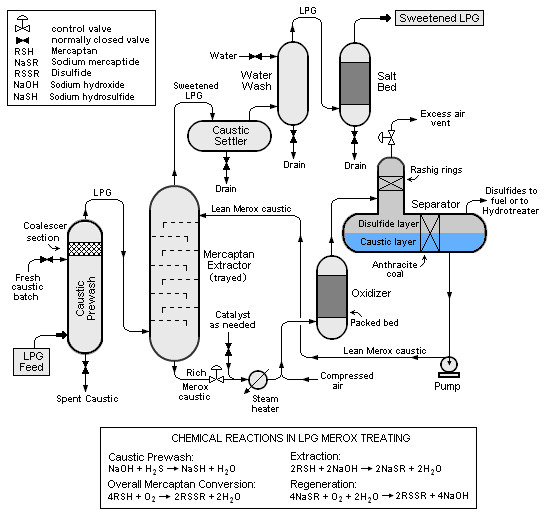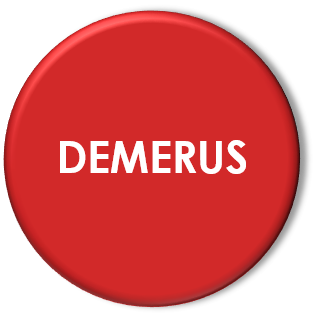Merox process (mercaptan oxidation) was developed in the 40s of the XX century by the American company UOP for desulfurization of natural and liquefied gases, gasoline and kerosene fractions treatment.
Desulphurization of gases by Merox process includes amine removal of hydrogen sulfide, carbonyl sulfide and alkaline mercaptan removal. Alkaline mercaptan removal is carried out by preliminary alkalization of feedstock from residual hydrogen sulfide followed by extraction of mercaptans from gas and regeneration of alkaline solution in the presence of homogeneous phthalocyanine catalyst and oxygen.To achieve low total sulfur content in the treated gas produced disulfides are washed out with light naphtha. Disulfides dissolved gasoline fraction is supplied to the hydrotreating feedstock.

Naphtha fraction treatment using Merox process was relevant before Euro-4 and Euro-5 standards on the content of total sulfur were applied. Oxidative alkaline mercaptan removal from kerosene with Merox technology occurs in the presence of water-soluble catalyst supported on activated carbon. Merox technology has four steps:
- acidic impurities removal from kerosene;
- mercaptan removal from kerosene with atmospheric oxygen in an alkaline medium in the presence of the catalyst supported on carbon;
- saline drying of water in kerosene;
- adsorptive kerosene treatment by clays from ions of variable valence metals present in the catalyst.
Distinctive feature of hydrocarbons sweetening technology DEMERUS, developed in the 90s in Russia, is the use of heterogeneous polymer-based KSM catalyst. The main advantages of heterogeneous KSM catalyst and DEMERUS process compared with Merox technology are following:
- service life increase up to 10 years or more;
- production of LPG with a minimum content of total sulfur (less than 10 ppm);
- no need for preliminary alkalization unit causing continuous toxic sulfide wastes production at gases sweetening;
- simplifying of kerosene treatment scheme by eliminating steps of alkalization, saline drying and post-treatment by clays.



